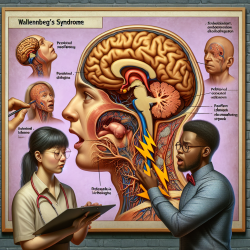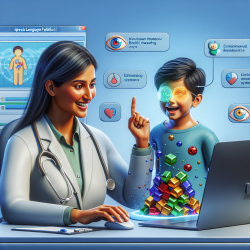Understanding Wallenberg’s Syndrome and Its Implications in Speech-Language Pathology
Wallenberg’s Syndrome, also known as lateral medullary syndrome, presents a unique challenge in the field of speech-language pathology, particularly when it comes to diagnosing and managing dysphagia. Recent research highlights an atypical presentation of this syndrome in a patient with newly diagnosed diabetes mellitus, emphasizing the need for practitioners to be vigilant and thorough in their assessments.
The Case Study: An Atypical Presentation
The research article titled Food Stuck in the Throat in a Newly Diagnosed Diabetes Mellitus Patient: An Atypical Presentation of Wallenberg’s Syndrome details a case where a 66-year-old male presented with dysphagia and an unsteady gait. Initial assessments, including a computed tomography (CT) scan, did not reveal any intracranial pathology, leading to a low suspicion of stroke. However, further investigation using magnetic resonance imaging (MRI) confirmed the presence of Wallenberg’s Syndrome.
Key Takeaways for Practitioners
This case underscores several critical points for speech-language pathologists:
- Comprehensive Neurological Assessments: Dysphagia can be an early indicator of posterior ischemic strokes. Therefore, a thorough neurological examination, including cranial nerve and cerebellar testing, is crucial.
- Importance of Advanced Imaging: While CT scans are often the first line of imaging, they may not detect posterior strokes effectively. MRI, particularly diffusion-weighted imaging, is more sensitive and should be considered when initial tests are inconclusive.
- Awareness of Atypical Symptoms: Practitioners should be aware that Wallenberg’s Syndrome can present without typical motor or sensory symptoms, making it essential to maintain a high index of suspicion when dysphagia is present.
Implications for Speech-Language Pathology
Understanding the nuances of Wallenberg’s Syndrome can significantly impact the management of dysphagia in patients. Speech-language pathologists play a vital role in the multidisciplinary approach to diagnosing and treating this condition. By recognizing atypical presentations, practitioners can advocate for appropriate imaging and interventions, ultimately improving patient outcomes.
Encouraging Further Research
This case study highlights the need for continued research into the varied presentations of neurological disorders like Wallenberg’s Syndrome. Speech-language pathologists are encouraged to stay informed about the latest research findings and consider contributing to the body of knowledge through case studies and clinical research.
To read the original research paper, please follow this link: Food Stuck in the Throat in a Newly Diagnosed Diabetes Mellitus Patient: An Atypical Presentation of Wallenberg’s Syndrome.










